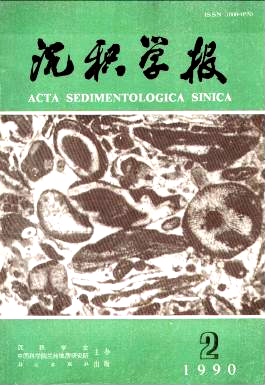A STUDY ON A BURIED FOSSIL OROGENIC BELT
- Received Date: 1988-01-07
- Publish Date: 1990-06-10
Abstract: The orogenic belt that rises straight up in relief is easy to recognize. However, some fossil orogenicbelt, having been strongly eroded, now are absent from surfac of the earth and covered by later sediments,Of course it, is very difficult to identify this kind of orogenic belt, but studying molasse-deposited closelyrelated to the orogenic belt-can provide a good method for identifying the orogenic beltz.Different orogenicbelt may produce different kind of molassed.The authors concluded the characteristics of molasse related tothe colliding orogenic belt, such as: 1.The sedimentary body is a very thick wedge which is thicker close to the orogenic belt and pinches outin the direckion of the craton. 2.The clastic sediments are coarse, and thick strata of kconglomerates may occur near by the orogenicbelt. 3. The sediments of the molasse are of recyclic character, and the chemical composition is rich mSiO2 and so the ratio of AL203 SiO2 is iow. 4. The molasse is deposited mainly on land where the proximal portion of molasse mainly exists or inneritic environments where the distal portion of molasse often occurs. 5. Abundant sedimentary structures show that paleocurrent direction is perpendicular to the orogenicbelt. 6.Sedimentary sequences are rhythmic ones in which the thickness of one rhythmic unit is about severalcm to several m 7.The molasse is unconformable with underlying strata which is often flysch in the proximal region, andis disconformable or conformable whith underlying strata which is platform formation in the distal area. The authors analyzed the Silurian molasse formation in the Northwest of Zhejiang, Southeast ofAnhui, and South of Jiangsu Provinces, and deduced that there was a Later Caledonianfossil orogenic beltin the east edge of Yangzi plate.Comparing the molasse with the underlying strata-the Upper Ordovicianflysch formation in sedimentological characteristics and tectonic settings, the authors found many impor-tant facts, some of them are listed here: l.The underlying Ordovician flysch deposited in an aulacogen, and it‘s elastic materials were suppliedfrom both (southeast and northwest) sides of the basin and transported mainly along the basin axis in thenortheast direction; but the sediments of the molasse came from east side and were transported mainlywestward. 2.The; thickness of sedimentary body of the molasse may be up to (i000m in the east area, and decreasesrapidly in the west of the molasse basin.3.The mineral composition of the molasse apparently differs from that of the underlying flysch, c.imefrom a recyclic orogemc belt On the basis of above-mentioned study, the authors made a careful study of the sedtmentologtcal characteristics of Maoshan formation(Upper Silurian) in the Southern Jiangsu and Southern :Anhw Thesults show tht the Maoshan formation is the uppermost and sthe westpart of the molasse.The sediments comefrom easternside, and the bottom of the sedimentary basin sloped to in the west at that time.So the source aream the east is the orogenic belt uplifted since the end of Ordovician. Because the deeper part of the orogcnticbelt were eroded, the slightly metamorphosed debris are more abundant and the igneous, sedunentary debris are fewer in the Maoshan Group than those in the lower part of the molasse.The Maoshan Group car, betreated as fresh water deposited upper molasse and the other strata (including Middle, Lower Stlunan ,tndthe uppermost part of Ordovician) can be ;:onsidered as the lower molasse deposited in nerittc zone. C'mm-paring the western boundary of the lomr molasse with that of the upper molasse, O is clear that thesedimentary axis of the molasse basin migrued westward for at least 90km in the period from the em? ofOrdovician to the end of Silurian.The spcee, migration is about 3mm per year.The study on Maoshan Group further proved that there existed a colliding orogenic belt(almost loomsouth to north in the east side of the basin,m the area nearby the outfall of Yangzi River The area adjacentto Jiangsu, Zhejiang and Anhui Provinces was , the foreland basin of the orogenic belt, and m such a basmdeposited the molasse fot}nation again from the end tit Ordovician to the end of Silurian.Such a ctinclusiun isbeneficial to reconsidering the evolution of ptleozolc geotectonics in Southern China and to exploring oil andgas in the Paleozoic strata.
| Citation: | Xia Bangdong, Lu Hongbo. A STUDY ON A BURIED FOSSIL OROGENIC BELT[J]. Acta Sedimentologica Sinica, 1990, 8(2): 1-8. |






 DownLoad:
DownLoad: